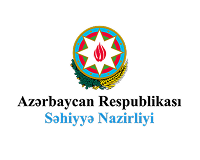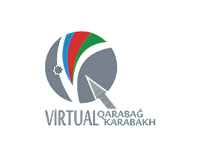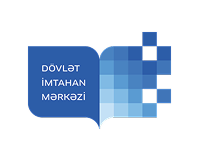SILLABUS I confirm
Azerbaijan Medical University Head of Departmentof
«Children's Diseases» subject «Children's Diseases II»
WORKER TRAINING PROGRAM prof. N.S.Sultanova
Signature ____________
___._________________.2023
SILLABUS
(educational-methodical program for organization of student's free work)
Faculty: Stomatology (Dentistry)
Department: «Children's diseaseII»
Education term of subject: VII
Academic year: 2022/2023
Course: IV
Instructors: Teaching staff of the department
Teaching load: practic lessons 50 hours + lecture 10 hours
Teaching method of subject: practic lessons (4h) + lecture (2h)
Subject code: İPF-B39
Subject type: Mandatory
Subject credits: 4
Instruction languages of subject:azerbaijan, russian, english.
Contacts: +994 51 599 06 24
E/mail: department_cdn2@amu.edu.az
PREREQUISITE:
Subjects that must be taught in advance: «Anatomy», «Physiology», «Pathological Anatomy», «Pathological Physiology», «Biochemistry», «Pharmacology», «Propaedeutics of Pediatrics».
COREQUISITE
There is no need to teach other subjects simultaneously with the teaching of this subject.
COURSE OBJECTIVES:
In the IV courses the main purpose of teaching children's illnesses is to acquire knowledge about the etiology, pathogenesis of frequently encountered diseases in children. Improving and strengthening the examination habits in pediatric patients is the goal of teaching the basic principles of clinical thinking, clinical diagnosis, obtaining differential diagnostic skills, and the treatment and prophylaxis of frequently encountered diseases.
At the 6th course, students are conducting a clinical training course in clinical departments and outpatient clinics as well as participate in multidisciplinary studies of the head of the department, professors and docents.
Clinical analysis of the lectures on the subject of the problem and the clinical analysis of practical subjects is accompanied by a detailed examination of the results of modern paraclinic examinations (instrumental, laboratory-biochemical, etc.).
COURSE RESULTS:
During IV courses, students acquire professional habit of examining patients, study diagnostics, differential diagnostic tactics, urgent emergency care, and medical documentation. In the IV course, syndrome and detailed differential diagnosis are studied. Upon completion of this course, students should be aware of the anatomo-physiological characteristics of different aged children and the measures they encounter. To achieve these, students will gain the most up-to-date medical equipment, the ability to accurately diagnose diagnosis and correct diagnosis by studying their primary diagnostic and prognostic markers, and correctly diagnosing the diagnosis.
THEMATIC PLAN OF LECTURES FOR STUDENTS OF THE FACULTY OF STOMATOLOGY (DENTISTRY) ON THE SUBJECT
«CHILDREN'S DISEASES»
IV COURSE (VII SEMESTER)
|
№ |
Themes |
Hours |
|
1 |
İntroduction to «Pediatrics», characteristics of the periods of childhood. Features of children's diseases in different periods of childhood. |
2 |
|
2 |
Rickets and rickets-like diseases in children, differential diagnosis, treatment and prevention. Hipervitaminosis D. |
2 |
|
3 |
Broncho-pulmonary diseases in children - ARVİ, bronchitis, pneumonia differential diagnosis, treatment and prevention. |
2 |
|
4
|
Rheumatic fever in children, etiopathogenesis, Kissel-Jones criteria. Congenital and acquired heart defects. Diffuse diseases of the connective tissue, systemic lupus erythematosus, etiopathogenesis, clinical features,treatment. |
2 |
|
5
|
Modern notions about viral hepatitis in children. Epidemiology, clinical forms. The value of antiseptic measures in the stomatologicalcabinet for the prevention of hepatitis B and C. Hematological diseases in children:anemia, leukemia, hemorrhagic diathesis. |
2 |
THEMATIC PLAN OF PRACTICAL LESSONS FOR STUDENTS OF THE FACULTY OF STOMATOLOGY (DENTISTRY) ON THE SUBJECT
«CHILDREN'S DISEASES»
IV COURSE (VII SEMESTER)
|
№ |
Themes |
Hours |
|
1
|
The structure and work of children's hospitals and clinics. Health groups. The role of history taking in assessing the health of children. Objective examination of the child. Evaluation of physical health: height, weight, chest and head circumference, somatotype, body index, harmonious development. Technique of anthropometry, concept of centile scales. |
4 |
|
2
|
Anatomical and physiological features of the digestive system in children. Modern concepts of nutrition in children under 1 year. The advantages ofbreastfeeding, technology, rules of the organization. Nutrient requirement. The timing and sequence of the introduction of complementary foods. Breastfeeding women's regime. Artificial feeding. Adapted and unadapted formula. Calculation of daily nutrient requirements. Artificial feeding. Mixed feeding. Indications for supplementation. Types and degrees of hypogalactia. The task of calculating the calory and feeding. |
4 |
|
3 |
Full-term and premature infants. Clinical characteristic. |
4 |
|
4 |
Sepsis. |
4 |
|
5 |
Chronic alimentary disorders. Hypotrophy, paratophy. Causes, degrees, diet therapy. |
4 |
|
6 |
Anatomical and physiological features of the bone system in children.Terms of appearance of dairy and permanent teeth, the formation of a bite. Rickets, etiology, pathogenesis, clinical forms, the influence on teething and the formation of the maxillofacial part. Treatment, prevention. Spasmophilia, clinical forms. Therapy of convulsions in spasmophilia. |
4 |
|
7 |
Anatomical and physiological features of the respiratory system in children. Pneumonia in children. Classification. Features of the course in early-aged children. Clinical features, complications. Acute bronchitis, differential diagnosis with bronchiolitis. Principles of treatment of pneumonia and prevention of complications. |
4 |
|
8 |
Anatomical and physiological features of the cardial system in children. Rheumatic fever in children, etiopathogenesis, Kissel-Jones criteria. Diffuse diseases of the connective tissue, juvenal rheumatoid arthritis, systemic lupus erythematosus,dif/diagnosis with non-rheumatic carditis, clinical features, treatment. |
4 |
|
9 |
Anemia in children. Leukemia and hemorrhagic diathesis in children, hemophilia, thrombocytopenic purpura (Werlhof’s disease). thrombocytopenia, von Willebrand disease, the main clinical and laboratory differences. Emergency care for bleeding. Tactics of the doctor in the treatment of diseases of the oral cavity during hemorrhagic diathesis |
4 |
|
10. |
Chronic diseases of the gastrointestinal tract in children. Chronic gastritis, gastric ulcer and duodenal ulcer, cholecystitis, pancreatitis. Еtiopathogenesis, treatment, prevention. The role of diet therapy. Relationship with chewing apparatus condition and chronic foci of infection |
4 |
|
11 |
Anatomical and physiological features of the urinary system in children.Kidney diseases in children. Nephritis. Nephrotic syndrome. Clinical symptoms, treatment, prevention. |
4 |
|
12 |
Scarlet fever. Diphtheria. Еtiopathogenesis, clinical forms. Differential diagnosis of true and false croup. Treatment, prevention. Active immunization. . |
4 |
|
13 |
Measles. Rubella. Whooping cough. Chickenpox. Parotitis. Viral hepatitis.Еtiopathogenesis, treatment, prevention |
4 |
FREE WORK:
During the semester each student is given the task 10 topics to work freely. Performance of each work assignment is 1 point.
The work should be in a written form, in the form of word file, size 4-5 pages (font-12).
Plagiarism is unacceptable because every free work is a collection of individual ideas.
CALENDAR-THEMATIC PLAN OF PRACTICAL LESSONS FOR THE FACULTY OF STOMATOLOGY (DENTISTRY) (SEMESTERVII)
|
№ |
Themes |
Hours |
|
1
|
The structure and work of children's hospitals and clinics. Health groups. The role of history taking in assessing the health of children. Objective examination of the child. Evaluation of physical health: height, weight, chest and head circumference, somatotype, body index, harmonious development. Technique of anthropometry, concept of centile scales. |
4 |
|
2
|
Anatomical and physiological features of the digestive system in children. Modern concepts of nutrition in children under 1 year. The advantages ofbreastfeeding, technology, rules of the organization. Nutrient requirement. The timing and sequence of the introduction of complementary foods. Breastfeeding women's regime. Artificial feeding. Adapted and unadapted formula. Calculation of daily nutrient requirements. Artificial feeding. Mixed feeding. Indications for supplementation. Types and degrees of hypogalactia. The task of calculating the calory and feeding. |
4 |
|
3 |
Full-term and premature infants. Clinical characteristic. |
4 |
|
4 |
Sepsis. |
4 |
|
5 |
Chronic alimentary disorders. Hypotrophy, paratophy. Causes, degrees, diet therapy. |
4 |
|
6 |
Anatomical and physiological features of the bone system in children.Terms of appearance of dairy and permanent teeth, the formation of a bite. Rickets, etiology, pathogenesis, clinical forms, the influence on teething and the formation of the maxillofacial part. Treatment, prevention. Spasmophilia, clinical forms. Therapy of convulsions in spasmophilia. |
4 |
|
7 |
Anatomical and physiological features of the respiratory system in children. Pneumonia in children. Classification. Features of the course in early-aged children. Clinical features, complications. Acute bronchitis, differential diagnosis with bronchiolitis. Principles of treatment of pneumonia and prevention of complications. |
4 |
|
8 |
Anatomical and physiological features of the cardial system in children. Rheumatic fever in children, etiopathogenesis, Kissel-Jones criteria. Diffuse diseases of the connective tissue, juvenal rheumatoid arthritis, systemic lupus erythematosus,dif/diagnosis with non-rheumatic carditis, clinical features, treatment. |
4 |
|
9 |
Anemia in children. Leukemia and hemorrhagic diathesis in children, hemophilia, thrombocytopenic purpura (Werlhof’s disease). thrombocytopenia, von Willebrand disease, the main clinical and laboratory differences. Emergency care for bleeding. Tactics of the doctor in the treatment of diseases of the oral cavity during hemorrhagic diathesis |
4 |
|
10. |
Chronic diseases of the gastrointestinal tract in children. Chronic gastritis, gastric ulcer and duodenal ulcer, cholecystitis, pancreatitis. Еtiopathogenesis, treatment, prevention. The role of diet therapy. Relationship with chewing apparatus condition and chronic foci of infection |
4 |
|
11 |
Anatomical and physiological features of the urinary system in children.Kidney diseases in children. Nephritis. Nephrotic syndrome. Clinical symptoms, treatment, prevention. |
4 |
|
12 |
Scarlet fever. Diphtheria. Еtiopathogenesis, clinical forms. Differential diagnosis of true and false croup. Treatment, prevention. Active immunization. . |
4 |
|
13 |
Measles. Rubella. Whooping cough. Chickenpox. Parotitis. Viral hepatitis.Еtiopathogenesis, treatment, prevention |
4 |
LIST OF PRACTICAL SKILLS FOR V YEAR STUDENTS OF THE FACULTY OF GENERAL MEDICINE ON THE SUBJECT OF «CHILDREN'S DISEASES »
|
№ |
Topics |
|
1 |
Examination of a sick child: palpation, percussion and auscultation. |
|
2 |
İmpatient management. Rules for writing a medical history. |
|
2 |
Interpretation of the results of analysis: - Simple blood analysis; - Biochemical blood tests (rheumatic tests, etc.); - Simple analysis of feces; - Gregerson's reaction; - Methods for the determination of Helicobacter pylori; - Immunologicaltests; - Bacteriologicalanalysis. |
|
3 |
Interpretation of the results of instrumental examination methods:
|
|
4 |
Taking a swab from the nose and throat for bacteriological analysis. |
|
5 |
Assessment of the work of external respiration. Peak flowmetry. Spirometry. |
|
6 |
Providing emergency care for:
|
|
7 |
Prescriptionrules. |
ESTIMATION
100 points, necessary in subject, will be divided as follows:
Also:
10 points - visit of occupations
10 points - free work
During a semester (12 days) to be carried out 3 colloquiums. If the student doesn't participate in a colloquium, then 0 points are written in the magazine . Examination is held on the basis of tests. Each question - 1 point.
NOTE:
The points gained prior to examination and at examination are summarized and the total point is estimated according to the following scheme:
A – «excelent » - 91-100
B – «very good» - 81-90
C – «good» - 71-80
D – «satisfactory» - 61-70
E - «passable» - 51-60
F- «unsatisfactory» - less 51
SILLABUS- THE WORKING TRAINING PROGRAM
The contents of the program of the bachelor cover planning of educational process, a form and methods of its application, volume of educational loading, duration of grade levels (semester), types of training (a lecture, practice, laboratory, etc.), volume of separate objects, requirements imposed to educational programs for specialties.
Planning and the organization of processes of training is carried out on the basis of working programs for objects and curricula (the approximate worker and the individual). The form and structure of these documents is defined by a higher educational institution.
Subject programs for specialties are prepared by higher educational institutions, according to requirements of higher educational programs and are confirmed by the Ministry of Education of the Azerbaijan Republic. On the basis of subject programs working programs (syllabuses) are developed and is confirmed from higher educational institutions
The working training program - prepares on the basis of a subject and represents the document displaying the description of a subject, the purpose, the summary, duration of occupations, hours of consultations, information on the teacher, requirements of the teacher, evaluation criteria, the intermediate table of estimation, the list of the used literature.
REFERENCE
- A.A. Əyyubova, H.H.Qabulov, N.H.Sultanova. Uşaq xəstəlikləri /Dərslik/ Bakı 2018, 558 səh.
- N.Ə.Tağıyev. Neonatologiya /Dərslik/, Bakı 2008, 535 səh.
- S.Ş.Həsənov. Yenidoğulan uşaqların reanimasiyası və intensiv terapiyası /Dərs vəsaiti/. Bakı 2009, 212 s.
- S.M.Qasımova, N.C.Quliyev, Ü.Ə.Əliyeva, Uşaq xəstəlikləri, /Dərslik/, Bakı 2016, 660 səhifə.
- S.Z.Qarayeva. Uşaq xəstəlikləri /Dərs vəsaiti/ Bakı, 2014, 186 səh.
- N.A. Hüseynova, N.C.Quliyev və b. Uşaq qastroenterologiyası /Dərs vəsaiti/ 2013, 391 səh.
- N.A. Hüseynova, N.C. Quliyev və b. Pediatriyada pəhriz terapiyası /Dərs vəsaiti/ 2014, 276 səh.
- А.А. Баранов.Детскиеболезни /Учебник/2-е изд, испр. и доп.-М.: ГЭОТАР-Медиа, 2012.-1008 с.
- Н.П. Шабалов.Детскиеболезнив 2-хтомах /Учебник/, 6-е изд. перераб. и доп. –СПб.:Питер 2012 (Учебник для вузов).
- Н.П. Шабалов. Неонaтология. В 2-т. Учеб.пособие, 5-е изд. испр. и доп. –М.: МЕДпресс-информ, 2009.
- P. Veliyev.Pediatrik Diseases /The Textbook/ Baku, 2012, 259 page.
TECHNICAL SUPPLIES
Puloxymeter, spirometer, neurosonograph, nebulaser


 English
English Русский
Русский




